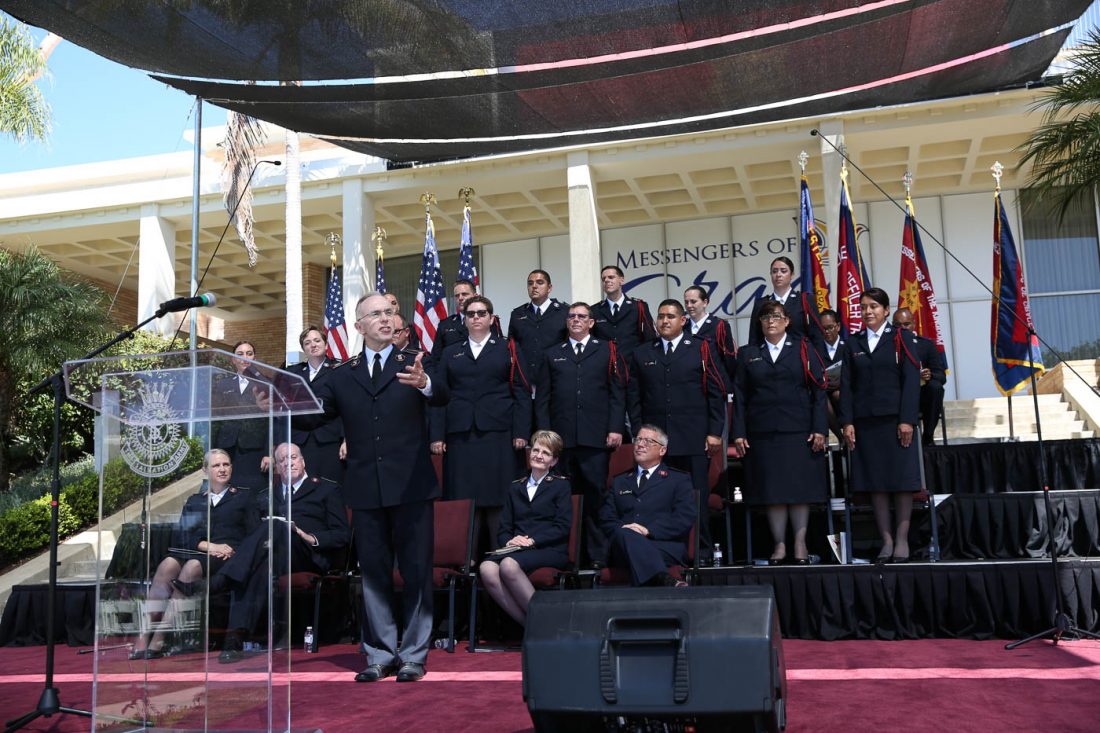The Salvation Army’s response to the hurricane continues.
In the five years since Hurricane Katrina first made landfall in the Gulf Coast in August 2005, The Salvation Army has assisted over 2.6 million people.
Short-term response
The Alabama/Louisiana/Mississippi Division launched a Community Recovery Plan in 2006 with six key projects:
Eight distribution centers along the Gulf Coast allowed over 106,100 pre-registered families to shop for free donated goods such as furniture and large appliances.
The Army opened 265,100 cases—representing over 828,000 individuals—at disaster assistance centers, where clients met with trained caseworkers to register and receive emergency services, including cash gift card distribution.
Army representatives participated in long-term community recovery efforts, meetings and committees throughout the region. Discretionary funds supported 2,412 community projects valued at over $5.5 million.
The Army created volunteer villages that offered housing to relief workers. Over 8,000 individuals resided at the volunteer villages representing over 56,000 nights of lodging for recovery teams.
Over 2,200 homeownership partner grants were distributed evenly to Louisiana and Mississippi.
The Army allocated resources for job training and re-employment services to help at least 5,000 people who became unemployed as a result of the hurricanes, in cooperation with partner organizations.
Long-term response
A series of programs continue today across the Gulf Coast to enhance community resilience.
In New Orleans, La., The Salvation Army’s EnviRenew program is currently developing 125 new, energy efficient and affordable homes, and renovating 125 more with green building standards throughout five neighborhoods. The $12.5 million program will also provide grants to an additional 500 homeowners to weatherize and increase energy efficiency in existing homes to lower owner expenses and enable greater long-term savings.
The Emerge program is working to improve attendance rates at area middle and high schools. To date, 19 of the 21 local Emerge schools average 92 percent attendance.
“Through EnviRenew and Emerge, The Salvation Army will uphold its dedication to the recovery of New Orleans until the day people return and once again prosper in their hometown,” said Captain Ethan Frizzell, New Orleans area commander.
On Aug. 26, the Army hosted a “Resiliency Summit” in New Orleans to bring community leaders together to discuss these and other long-term recovery efforts in the city.
In Mobile, Ala., The Salvation Army opened a new shelter for women and children in July 2010 on the site of a shelter destroyed by Hurricane Katrina. The new shelter will house up to 50 homeless mothers and their children and provide case management, childcare and educational opportunities.
In Biloxi, Miss., The Salvation Army began construction on a 52,000 sq. ft. Ray and Joan Kroc Corps Community Center in an area devastated following Hurricane Katrina. The $16 million center, which is scheduled to open in late 2011, will feature a water park, fitness center and performing arts space. The new building is on the site of Yankie Stadium—where the Army previously operated a “volunteer village” for Katrina aid workers.
“A building like this (Ray and Joan Kroc Community Center) will change the dynamics of this community,” said Lt. Governor Phil Bryant of Mississippi.
From a report by Mark Jones, Divisional PR Director, ALM Division.











